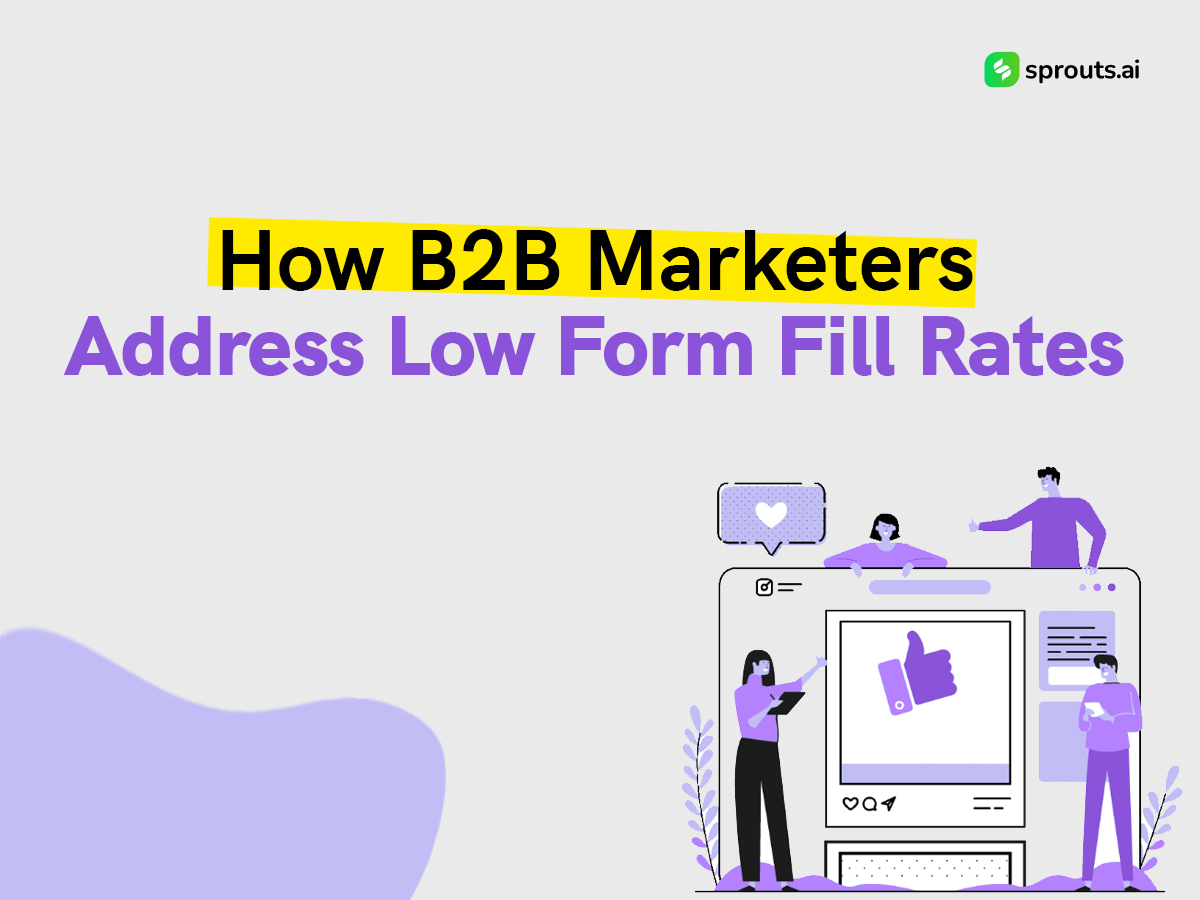Navigating the B2B marketing scene demands constant adaptation. One persistent puzzle that often confounds marketers is the low form-fill rate. From a visitor landing on a webpage to filling out a form, this journey is akin to decoding a complex cipher. However, B2B marketers are not merely trying to break the code but mastering it, employing strategies that address low form-fill rates and propel lead generation to new heights.
Understanding Why Few People Fill Out Forms
1. Understanding the Anatomy of a Low Form Fill Rate: A detailed understanding of its components is imperative to crack the code. Low form fill rates could stem from various issues, ranging from cumbersome form designs to a lack of perceived value or even trust issues. Pinpointing the exact problem is akin to finding the key to a vault.
Form Design Faux Pas: Many B2B forms, unfortunately, resemble a legal document rather than an invitation. Clunky, lengthy, and demanding too much information upfront can act as a deterrent.
Perceived Value Deficit: If prospects don’t see the value in sharing their information, they won’t. The fundamental question becomes, what’s in it for them?
Trust Deficiency: Prospects are wary in an era marked by data breaches. Building trust is paramount; users won’t readily part with their details if your website doesn’t radiate reliability.
2. The Psychology Behind the Click: Deciphering the psychology behind a user’s decision to fill out a form involves understanding their motivations, fears, and expectations.
The Value Proposition: Users need to be convinced that what they get in return for filling out the form is worth more than the information they provide.
Perceived Effort: Every click is a decision, and users weigh the effort of filling out a form against the potential gain. Simplifying the process can drastically improve form fill rates.
Building Trust: Trust is the currency of the digital realm. Visible security measures, testimonials, and clear privacy policies can tip the scales in your favor.
Strategies for Cracking the Code
1. Optimize Form Design for User-Friendliness:
A well-designed form is a formidable ally in the battle for higher form fill rates.
Minimalism Matters: Trim the excess. Only ask for essential information. Every additional field is a potential drop-off point.
Mobile Optimization: With an increasing number of users accessing websites via mobile devices, ensure your forms are mobile-friendly. A responsive design provides a seamless experience, contributing to higher completion rates.
Progressive Profiling: Instead of bombarding users with a laundry list of questions, consider progressive profiling. Collect basic information initially and gather more details over subsequent interactions.
2. Craft Compelling Calls to Action (CTAs):
The CTA is the portal to your form; make it irresistible.
Be Clear and Concise: Ambiguity is the enemy. Communicate what the user will gain by filling out the form. Use action verbs that convey a sense of urgency.
Create a Sense of Exclusivity: People are more likely to act if they feel they are accessing something exclusive. Use words like ‘exclusive,’ ‘limited,’ or ‘reserved’ to evoke this feeling.
A/B Test Your CTAs: Crafting the perfect CTA involves experimentation. A/B testing allows you to refine and optimize your call to action continually.
3. Leverage the Power of Social Proof:
Humans are social beings; we look to others for cues on acting.
Customer Testimonials: Showcase the positive experiences of previous customers. Authentic testimonials add credibility and reassure potential leads.
Highlight Subscriber Counts: If your content or service has a substantial following, display it proudly. It signals to users that they are in good company.
Trust Badges: Display trust badges from reputable security providers to alleviate concerns about data security.
4. Implement Smart Data Capture Strategies:
Instead of overwhelming users with a barrage of questions, capture data intelligently.
Interactive Content: Replace static forms with interactive content like quizzes or assessments. Users are more likely to engage with interactive content, providing valuable data.
Auto-Fill Options: Simplify the process by providing auto-fill options for repetitive information. This reduces friction and makes the process smoother.
Use Conditional Logic: Show or hide form fields based on user responses. This not only streamlines the form but also enhances the user experience.
5. Nurture Leads with Targeted Content:
The relationship with a prospect doesn’t end when they fill out a form; it’s just the beginning.
Personalized Follow-Up Emails: Send personalized emails based on the information collected. This not only reinforces your value proposition but also keeps your brand top of mind.
Content Segmentation: Tailor your content to different segments of your audience. A one-size-fits-all approach rarely resonates; personalized content speaks directly to the needs and interests of your leads.
Lead Scoring: Implement a lead scoring system to identify high-value prospects. This ensures your sales team focuses on leads with the highest potential.
The Road Ahead: Continuous Optimization
Cracking the code is not a one-time endeavor; it’s an ongoing refinement and optimization process.
Analytics as Your Compass: Regularly analyze form metrics to identify drop-off points and areas for improvement. Tools like Google Analytics and Heatmaps can provide invaluable insights.
User Feedback Loop: Actively seek feedback from users. What made them fill out the form? What almost stopped them? This qualitative data can be as important as quantitative metrics.
Stay Abreast of Trends: The digital landscape is ever-changing. Stay informed about emerging trends in user behavior, technology, and design. What works today might not work tomorrow.
Cracking the code of low form-fill rates in B2B marketing is not a Herculean task. It involves a nuanced understanding of user psychology, strategic design, and a commitment to continuous improvement.
Remember that each form is an opportunity, and each user who engages is a potential long-term relationship. By optimizing your approach, leveraging the right strategies, and staying attuned to your audience, you’ll not only crack the code but also unlock a treasure of B2B opportunities.

